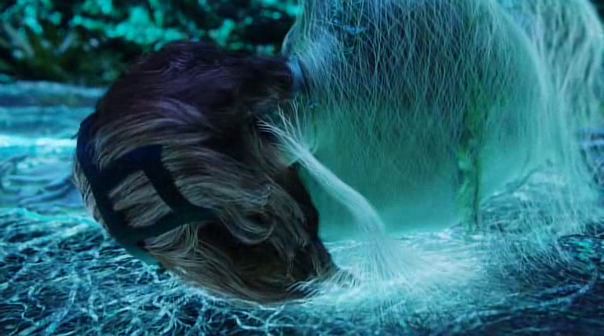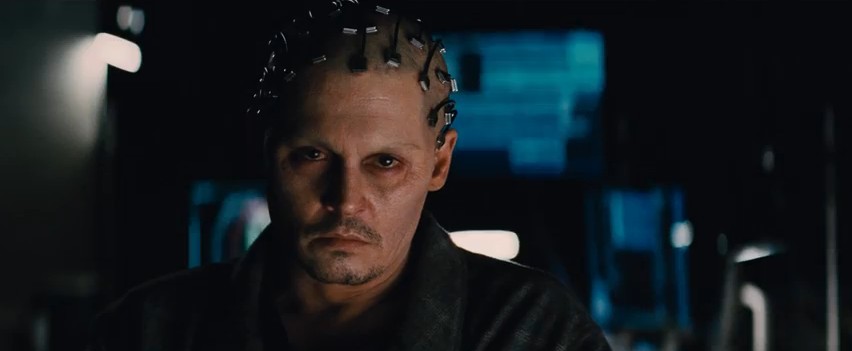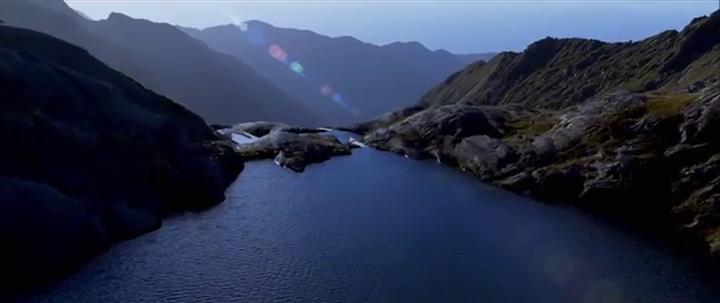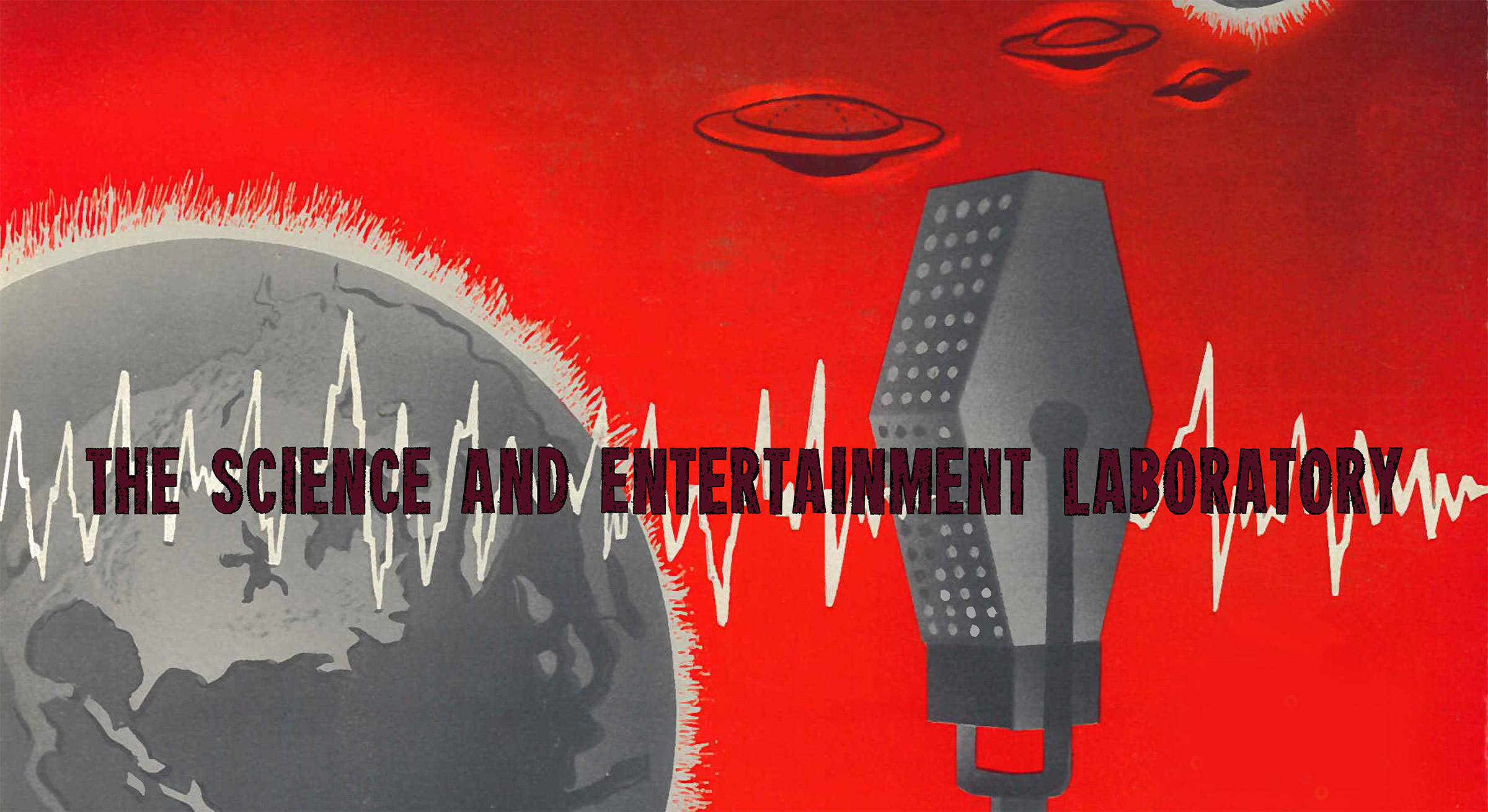***Warning: Post contains spoilers for the films Avatar (2009) and Transcendence (2014)***
Death is a staple of human existence and it should come as no surprise that throughout history, human communities have developed narratives and practices to cope with death and imagine and enact a possible afterlife. Today, one arena where such narratives are acted out is popular culture and science fiction film. Transhumanists have a vested interest in how SF films portray technological possibilities for life after the death of the biological body or avoiding death altogether. Transhumanism is a philosophy that encourages the use of technology (e.g. bio-technology, nano-technology) to enhance the human body or speed human evolution. It aims to deliver us from earthly ailments such as sickness or the aging body and promises a healthy, youthful and radically extended (if not eternal) life. Julian Savulsecu, Uehiro Chair of Practical Ethics at the University of Oxford calls it a “mainstream academic movement with real intellectual credibility” and finds that “[i]n the last 10 years, transhumanism has spread not as a religion but as a creative rational endeavor” in his endorsement found on the back cover of the Transhumanist Reader. In contrast, Robert M. Geraci conceptualizes transhumanism as a “new religious movement” that calls upon us to transcend the conditio humana, the human condition as we know it and promises its followers a longer, happier, and more enriched life.
The connection between transhumanism and popular culture is not a random one but almost inscribed into transhumanism as movement. Some notable scientists in the transhumanist community are also science fiction writers, such as Vernor Vinge, retired Professor of Mathematics at San Diego State University. Two contemporary examples from film that popularize, naturalize, and normalize transhumanist ideas are James Cameron’s Avatar (2009) and Wally Pfister’s Transcendence (2014).
Avatar’s Religious Naturalization of Technology
I see the film Avatar – as problematic as the film is with regards to its racial subtones and its message about people with disabilities – as a transhumanist’s wet dream of sorts, even if Ray Kurzweil thought not much of the technological imaginary in the film: “Cameron’s conception of technology a hundred years from now was incredibly unimaginative, even by Hollywood standards.” Some transhumanists, so-called “uploaders”, hold the idea that at some point, technology will allow us to separate mind from body to leave our fragile (or in Avatar’s context: disabled) bodies behind and enjoy immaterial eternal life in the havens of cyberspace (subject to Blue Screens of Death, viruses, malware, and many other nasty cyber creatures). Uploaders point out that uploading must not necessarily lead to a disembodied existence but would allow individuals to swap their bodies at will, better bodies, other bodies, today male, tomorrow female, or bodies with entirely new sexual organs.
Avatar features a technology that allows scientists (and the paraplegic Jake) to remote control artificially created Na’vi/human hybrid bodies. This experience is completely immersive, provides Jake with the feeling of using “his” legs again, and we get the impression that only in his avatar-body, he feels complete and whole. Yet, this experience remains dependent on technology while at the same time both his human body and technology get in the way of this feeling of being whole: his body, because of its bodily needs (he has to unplug every so often) and technology, because Jake is immersed into his avatar only as long as the technology functions properly. And while he succeeds in befriending the Na’vi, both his human and Na’vi bodies remain alien and technological until his Na’vi body is naturalized through what seems like a pagan ritual. In fact, it is the Na’vi’s pagan ritual that allows Jake to overcome the limitations of his body and earthly technology and – ultimately – permanently transfer his mind into his Na’vi body and thus escape his deficient human body – something human technology was not able to achieve.

During the mind-transfer ceremony, the Na’vi pray, dance, and chant and glowing roots grow around Jake’s two bodies. When the same ritual is performed to save the dying Dr. Grace Augustin into her Na’vi body, the Na’vi describe the process as passing through Eywa: “the Great Mother may choose to save all that she [Grace] is in this body [Grace’s Na’vi body]” and she “must pass through the eye of Eywa and return”. The film ends with Jake opening his eyes in his new and naturalized Na’vi body (naturalized because the artificial Na’vi body is no longer dependent on technology and an external operator). Nature and religion seem to succeed where technology failed. But this is not the full story. One the one hand, the glowing roots that connect to the nervous system really look like popular representations of fiber optic cables required to transfer massive amounts of data (the kind amount of data that might be required to actually transfer the “content” of a mind). On the other hand, the pagan ritual in a natural environment suggests a close and intimate relationship with nature, it makes the otherwise technological idea of body swapping not only acceptable but desireable. It naturalizes technology and re-imagines a technological process as a natural one. One might say, it is the stuff the dreams of uploaders are made of.
Transcendence and the Goodness of Technology
Wally Pfister’s Transcendence (UK, China, USA 2014) is all about mind uploading and the transformation of Will Caster (Johnny Depp) from a bodily being into a virtual existence. Gaining access to the internet, virtual Will he becomes an almost divine-like omnipotent figure who – quite conveniently and godly – can incarnate himself with the help of nanotechnology. Seth D. Baum calls the film “a cautionary tale about the perils of AI – or the perils of the lack of AI, depending on one’s perspective”.

Compared to Avatar, the uploading process looks very technical, cold, and tedious, something hardly anyone would probably voluntarily subject themselves to. However, what starts as dystopia or as cautionary tale really ends as redemption of technology: humans destroy the environment, uploaded Will heals the environment; humans suffer from illnesses, Will heals and saves them; humans build weapons and shoot to kill, Will heals and resurrects (though he also remote controls some healed and nano-enhanced humans).
We can also find a number of religious and Biblical undertones in Transcendence. Towards the end of the film, we see nanobots dissolving human weaponry and turning them into dust. The prophets Micah 4:3 and Isaiah 2:4 come to mind who prophesize a restored and peaceful world: “They will beat their swords into plowshares and their spears into pruning hooks.”

And almost similar to the Roman soldier who bears witness to Jesus as the Son of God in Mt 27:54 (“Truly, this was the Son of God!”), Evelyn and Max bear witness to the goodness of uploaded Will. Evelyn’s doubts whether or not uploaded Will is really Will are only cast away when she lies dying in Will’s arms and is connected to uploaded Will with the help of nanobots: “[Evelyn] “Will, it is you” [Will] “Always was” [Evelyn] “Sorry I didn’t believe you”. The skeptical and unbelieving Thomas in John 20:24-29, too, only believed that Jesus has risen after he has seen (and been prompted to touch) him. And the Emmaus disciplines came to believe in Jesus’ resurrection only through Jesus breaking the bread with them which opened their eyes. Not dissimilar, Max Waters, human Will’s best friend, did not believe uploaded Will was the “real” Will until the end of the film when his eyes are opened seeing Will and Evelyn dying in each other’s arms and he professes: “He [Will] created this garden for the same reason he did everything: so that they [Will and Evelyn] could be together.”

Scientists, Fans, Religion
Both films, Avatar and Transcendence can be seen as transhumanist movies and are good examples for the complex relationship between transhumanist scientists as both providers and audience of stories and religion.
AI researcher Ben Goertzel, for example, pointed out that filmmakers consulted researchers on the representation of nanotechnology and mind-uploading for the film Transcendence. Goertzel himself was invited to speak about artificial intelligence and mind-uploading at the Beijing launch of the film. Though he is ultimately disappointed that the film does not push the singularity idea (the idea time will see the emergence of something radically new, something we can neither think of nor imagine) far enough, he expresses high hopes for the film industry and the stories it tells about our (human-techno) futures:
At some point, perhaps, the film industry will come through with Singularity films that don’t downplay the true transformative impact, that don’t have the transhuman tech bizarrely disappear and leave us right back where we started with our good old monkey minds. But it seems the film industry thinks the public isn’t quite ready for this yet – instead, it thinks the public wants fairy tales in which tech rears its shiny scary head and then traditional humanity reasserts itself and reigns supreme. Perhaps the film guys are right about what their audience wants to see, today in early 2014. When will the public be ready for futuristic cinematic visions that truly attempt to come to grips with the amazing, frightening, wonderful, barrier- and worldview-smashing reality of the actually unfolding future?
George Dvorsky, science writer, bioethicist, and contributor to io9.com, appreciated the notion of interconnectedness in Avatar as “cool”. In particular, he pointed out that the Na’vi, animals, plants, and the planet itself have connectivity built into their very being:
I did appreciate how Cameron achieved the sense of interconnectedness between the characters and Pandora. The ability of the Na’vi to link with other animals in a symbiotic fusion was very cool, as was the ability to upload conscious thought through the very fabric of the planet (a nice interplay on the high-tech/lo-tech theme knowing that the humans were also dabbling in mind transfer).
Giulio Prisco, a transhumanist, physicist and computer scientist, and a former senior manager in the European Space Agency (ESA) welcomed the – very subtle – message of Transcendence that we should actively pursue research into mind-uploading:
But I guess most viewers end up persuaded that yes, the upload was Will, and no, he wasn’t evil, on the contrary he wanted to do good and help humanity. I guess some viewers end up persuaded that mind uploading and superAI are not only possible, but desirable and perhaps inevitable. This subtly suggested conclusion goes against the currently fashionable fake-liberal PC War on Imagination.
More importantly, Prisco explicitly brings religion into the discourse. In his comments on Avatar, Prisco explains:
Transhumanists also feel Einstein’s religious awe at the beauty and sublimity of the universe. But we thing [sic] we, and all our past and future technology development, are also part of nature. We are about to merge with our technology and enter a phase of directed evolution, which some call post-darwinian [sic] evolution but others, and I quite agree, view as a continuation of our darwinian [sic] evolution. Our efforts to master the universe and take more and more control of our environment are part of the unfolding story of our natural universe. If we don’t like something, for example our own vulnerability to disease, and mortality, we can and should try to change it (after understanding it better etc., but without any trace of reverence fro nature [sic] or, even worse, humility). This is what our species _does_, and in this sense I think transhumanism affirms human nature much more than other worldviews.
Prisco does not limit the links to religion to science fiction narratives; in fact, he is well known for drawing parallels and comparisons between transhumanism and religion. In his contribution “Transcendent Engineering” to the Transhumanist Reader, he admits that some transhumanist ideas, e.g. some versions of uploading, is more “a mythology and not a scientific theory. I believe it is a mythology compatible with rationality and the scientific worldview” (237).

Film fans, too, readily pick up on the religious subtexts of many popular representations of transhumanism. The film critic and owner of the site ropeofsilicon.com, Brad Brevet draws on the idea of the self-healing of nature and thus ascribes a transcendent, almost divine-like status to nature:
To me, Transcendence is an example where nature (of which the human race is a part of) has found a way to heal itself and, in a lot of ways, nature has created an AntiVirus to cure the Earth of the destruction caused by humanity. […] Will Caster served as the next stage in human evolution, while at the same time offering a solution to the destruction humans have caused the Earth. The pollution of our world’s oceans that became a larger reality after the recent search for the Malaysian airliner. A solution to air pollution and a solution to death.
The Learning Curve?
So what do we learn from this? Church attendance in most western countries is in decline, but for some reason it seems we cannot get rid of religion. Ironically, religion re-enters public discourse and popular culture through the very venues that – in popular and political discourse – are often staged as forces opposed to religion: science and technology. When Savulesco argues that transhumanism is spreading as non-religious rational movement, we need to ask two questions: why does it present itself with all the religious bells and whistles and why does popular culture created by both transhumanists and non-transhumanists rely on religious tropes to communicate transhumanist ideas about our common future? The two films Avatar and Transcendence might provide us with a preliminary answer. Both films intertwine religion, technology, and nature. Avatar naturalizes and spiritualizes technology and thus renders invisible a rational-technological imaginary; it gets rid of (evil corporate/war) technology by naturalizing it. Transcendence – though cautiously – acts as a supplicant for technology because it is the only way to undo our sins against nature and ourselves. As such, both films – and one could argue transhumanism itself – are religiously informed tales with the aim to open our eyes and help us see the transhumanist vision. Most importantly, in both cases religious language and ideas help stage technology – and with it transhumanism and its proponents – as heralds of a new age.

 Follow
Follow